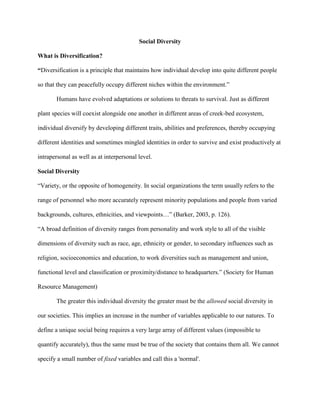The document discusses the concept of social diversity, defined as the variety within social organizations that represents different backgrounds, cultures, and viewpoints. It emphasizes the importance of individual uniqueness and the dynamic nature of societies, while examining the impact of communication patterns on interpersonal and intrapersonal relations. Additionally, it highlights multiculturalism as a means to understand and celebrate diversity across various settings.








